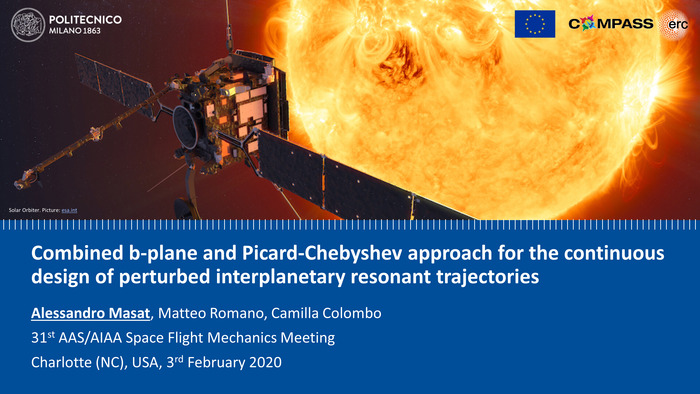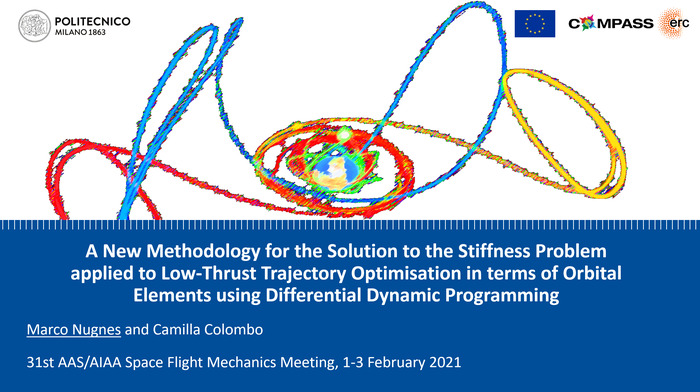The COMPASS team attended the 31st AAS/AIAA Space Flight Mechanics Meeting, held virtually from 1st to 3rd February 2021.
The AAS/AIAA Space Flight Mechanics Meeting is one of the most important events on astronautics and space science from a technical point of view. This year’s edition has been carried out on a virtual platform due to the Covid-19 pandemic. The platform introduced a virtual “lunch room”, where the attendees had the possibility to interact as in live events.
The COMPASS team joined this key event to present some of its its recent developments in the fields of astrodynamics and orbit mechanics. Marco Nugnes presented the latest results related to his research project, focusing on a method to solve the stiffness dynamics associated to the use of orbital elements in the trajectory optimisation problem using Differential Dynamics Programming.
Alessandro Masat presented its recent work exploring a combined b-plane and Picard-Chebyshev approach to design perturbed interplanetary resonant trajectories.

Mathematical complexity and computational cost go side by side in trajectory design applications. Surfing complex perturbing environments is usually an expensive task requiring the aid of many numerical simulations, even more if multiple flybys are to take place and the patched conics approximation is not accurate enough. The Picard-Chebyshev integration method is an efficient, portable, and parallelisable numerical integration technique that, however, requires a good starting guess to converge to the true dynamics modelled. Its combination with the b-plane theory and a Keplerian initial guess enables an excellent pruning, ensuring the convergence for weakly perturbed two body problems. The trajectory is obtained by solving an efficient multi-layer optimisation problem that minimises the artificial correction required to jump from one flyby to the other requiring the continuity between interplanetary and flyby phases. Designing resonant flybys, a few meters per second delta-v suffices to obtain the desired trajectory, and all the perturbing effects included in the dynamics are automatically surfed.

